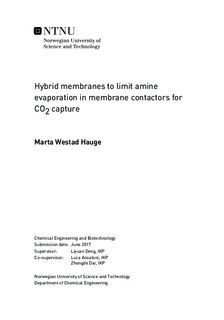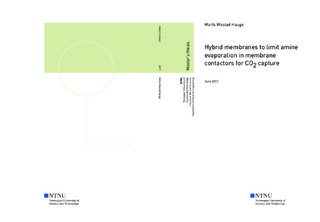| dc.description.abstract | In order to meet the global demand of energy from combustion processes with fossil fuels
without interfering with the atmospheric levels of CO2
, carbon capture and storage (CCS)
is considered a viable solution. Separation of CO2
from combustion gas performed by
absorption/stripping in columns is today a costly and energy demanding process. One
way to reduce the energy requirement of CO2
absorption is to use DEEA MAPA blends,
but they are volatile and their use at industrial level is thus problematic.
Membrane based absorption, defined as membrane contactors allow operating with volatile
absorbents without emitting more harmful chemicals. This require a membrane that allows
high CO2
and low absorbent permeability. Membrane contactors also have the
potential to reduce the capital cost of absorption as effective membrane modules increase
the surface area of absorption, and thereby reduce the process volume.
This thesis has investigated two different AF2400 membranes with addition of ZIF-8 and
XT-RGO nanoparticles, and in particular how these nanocomposite membranes affect
characteristics that are important to consider in membrane contactor absorption. The
membranes were tested together with a volatile 3rd generation CO2
absorbent named
3D3M and with MEA as a reference absorbent. It was discovered that the two nanocomposite
membranes decreased the permeability of the two amine absorbents substantially
compared to the pure AF2400 membrane. However, the nanocomposite membranes also
revealed a lower CO2 permeability compared to pure AF2400. A simple membrane contactor
model was proposed to evaluate the membrane module performance in terms of
evaporation prevention. Other highly CO2 permeable membranes were tested together
with 3D3M and two other 3rd generation absorbents - 3DEA2M and 3HEPP2M, where
only AF2400 proved to be stable with the absorbents. | |

